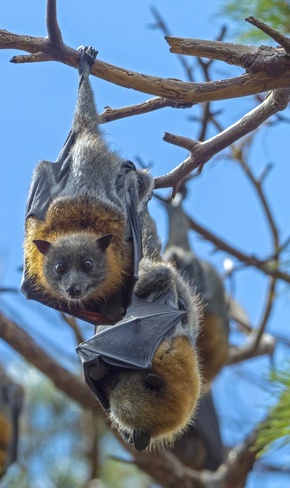Creating conceptual models and developing predictive risk models for zoonotic diseases
Zoonotic diseases represent 75% of the world’s emerging infectious diseases (Taylor et al. 2001), being caused by agents transmitted from animals to humans (Jones et al. 2013) and constituting a constant public health concern. Studies suggest that the greater the biodiversity of a location, the greater the pathogens richness and consequently larger the number of zoonotic diseases outbreaks (Allen et al. 2017). Yet, certain factors can alter the transmission risk of these diseases, by increasing the abundance of hosts and reservoirs, such as the conversion of natural habitats to agricultural uses, urbanization, the climate (Prist et al. 2016, Walsh 2015), and the introduction of invasive species, such as wild boar. This species, together with the overabundance of capybaras, can increase the transmission risk of spotted fever, acting as facilitators of this pathogen (Kmetiuk 2019), and possibly of others too.
In order to be able to predict the occurrence of new outbreaks and correctly guide the allocation of vaccination campaigns and preventive measures, this objective aims the creation of conceptual models, which aim to understand the role of exotic species and which environmental mechanisms lead to the occurrence and spread of these diseases, both in rural and in urban landscapes, and the development of predictive risk models in scenarios of land use and climate change. The result of these models will subsidize public policies to prevent and control these zoonotic diseases, always considering that human, animal and environmental health are related (Webster et al. 2016).




Main Tasks in this Challenge
Literature review on the main environmental drivers, including invasive amplifiers, that lead to an increase in the population of zoonotic disease vectors and hosts, and consequently increase the risk of transmission to humans. This review will be conducted systematically from the available literature and will generate a conceptual model, which will provide the theoretical basis for the development of predictive risk models and will generate knowledge about which environmental factors affect the transmission risk of these pathogens.
Integration and standardization of the different databases existing in the different institutions. We will do a search for the existing databases on vectors, hosts, and pathogens, in the different institutions linked to public health, aiming at the creation of a unified database.
Implementation of accurate predictive models of transmission risk. The occurrence and abundance data of vectors, hosts, invasive amplifiers and pathogens, obtained from the different existing databases (Task 2) will be associated with the environmental variables listed in the conceptual models (Task 1) to generate predictive models of transmission risk.
Evaluate the impacts of climate change scenarios on the transmission risk of these zoonotic diseases. We will assess the impacts of the high emission (RCP8.5) and intermediate emission (RCP4.5) scenarios, for the years 2050 and 2100, on the transmission risk of these zoonotic diseases. These models will identify the increased transmission risk of these pathogens against these scenarios and identify which locations will be most affected. These results will generate policies for preventive actions in future scenarios, which may prevent future outbreaks of these diseases.






